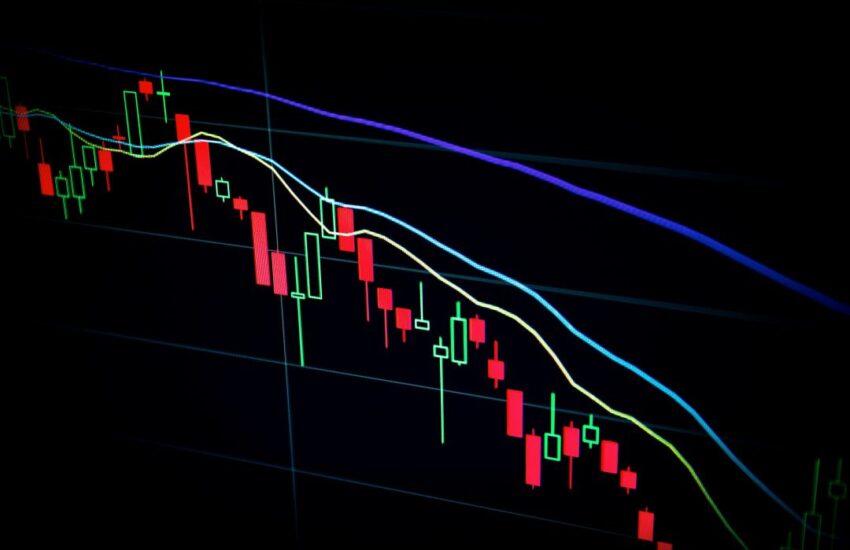Bitcoin Halving: How It Works And Why It Matters
The supply of fiat currencies can be controlled by central banks but the supply of Bitcoin is fixed and unchangeable. There will only ever be 21 million Bitcoins. Over 19 million have been mined so far so less than 2 million to go. The Bitcoin protocol has a mechanism called halving which reduces the number of new coins miners earn. The last Bitcoin halving was on April 19, 2024.
Bruce Fenton, CEO of fintech company Chainstone Labs says “One of the most important features of Bitcoin is its limited supply and issuance mechanism”. The halving of supply of new Bitcoins is the reason why the world’s most popular cryptocurrency is seen as a store of value like gold and not fiat currency.
What Is Halving?
Halving is when the reward for mining Bitcoin is cut in half. This happens every 4 years. Next halving is expected to be in 2028.
The halving is embedded in the Bitcoin mining algorithm to combat inflation by scarcity. In theory if the pace of Bitcoin issuance slows down and demand remains constant or increases the price of Bitcoin should rise. Currently Bitcoin has an inflation rate of less than 2% which will decrease with further halvings according to David Weisberger, CEO of trading platform CoinRoutes. Since Bitcoin’s supply is fixed its inflation rate is easy to calculate.
Chris Kline, COO of Bitcoin IRA says “Bitcoin’s production scarcity is what makes it finite and when the reward goes down supply is constrained. Increasing demand at a time when supply is constrained has a positive impact on price which makes Bitcoin attractive to investors.”
How Does Halving Work?
Bitcoin transactions are verified by a decentralized network of validators in a process called mining. Currently miners are rewarded with 3.125 BTC when they are the first to solve complex mathematical problems and add a batch of transactions to the Bitcoin blockchain as part of its proof-of-work mechanism.
At current price 3.125 BTC is worth around $200,000. This is a big incentive for miners to keep adding blocks of Bitcoin transactions smoothly.
These blocks are added every 10 minutes and Bitcoin’s code dictates that the reward for miners is halved after every 210,000 blocks are created which happens roughly every 4 years. This often leads to increased Bitcoin price volatility.
When Is The Next Halving?
The Bitcoin algorithm says halving occurs after a certain number of blocks are created. While the exact date of the next halving is unknown experts expect it to be in April 2028 about 4 years after the last one on April 19, 2024.
It’s not meant to be a shock to the system but it won’t be quiet.
Rob Chang, CEO of Gryphon Digital Mining, a private Bitcoin miner, says, “Historically there is a lot of price volatility leading up to and after a halving. But the price of Bitcoin always ends up higher a few months later.”
Many things affect the price of Bitcoin but halvings are generally bullish for the cryptocurrency after the volatility subsides. Richard Baker, CEO of miner and blockchain services provider TAAL Distributed Information Technologies, warns to be careful. Scarcity can drive price up but reduced mining can level off the price.
David Weisberger says, “The key point for investors is not the specific dates of the halvings but the overall growth of the network. As long as the network grows the likelihood of Bitcoin becoming a global store of value increases.”
When Was the First Bitcoin Halving?
The first Bitcoin halving was in November 2012, the second in July 2016, the third in May 2020 and the latest in April 2024. The reward for mining was 50 BTC per block when Bitcoin launched in 2009 and has halved with each subsequent halving. After the first halving the reward decreased to 25 BTC per block.
The last halving is expected to be around 2140 by which time 21 million BTC will be in circulation and no more coins will be created. From that point on miners will be compensated with transaction fees.
Baker points out that once the next halving happens miners might shift their transaction processing power away from BTC to go after more lucrative transaction fees elsewhere which could make the network less secure.
On the other hand although halving reduces miners’ rewards it also reduces the supply of new coins without diminishing demand. Patricia Trompeter, CEO of cryptocurrency miner Sphere 3D Corp says, “If the economic theory holds true which historically for Bitcoin it has, Bitcoin prices should increase dramatically in response to the supply shock”. But she adds, “There is still debate on whether the historical price movement around each halving was a direct product of the halving.”
Higher prices will incentivize miners to keep processing Bitcoin transactions. The delicate balance between supply, demand and miner incentives is what makes halving so important in the Bitcoin ecosystem.
What Are the Broader Implications of Bitcoin Halving
Bitcoin’s halvings have big implications for the market, mining and its store of value. The reduction in rewards will impact miner profitability and may shift mining power and network security. But the historical trend of prices going up after the halvings suggests that market participants view halvings as bullish.
Fiat currencies have flexible monetary policy, they can print more money to respond to the economy and that leads to inflation. Bitcoin has a fixed supply and a predictable issuance schedule, that’s a form of digital scarcity that investors are looking for as a hedge against inflation.
The anticipation of halving events can drive speculation and volatility. But in the long run halving is good for Bitcoin’s price, more scarcity and sustained demand.
Bitcoin’s finite supply and halving is part of its being “digital gold”. The analogy to gold is based on scarcity and store of value. Like gold, Bitcoin’s value is derived from its supply and cost of production (mining). But unlike gold, Bitcoin is digital, so it’s transferable and divisible.
Future Outlook and Investor Considerations
As the next halving approaches, investors and market participants will be watching its effect on Bitcoin’s price and mining. Historicals are some guide but each halving is unique.
Investors should look at the bigger picture of Bitcoin’s network growth, adoption and tech advancements. The growth of the network, institutional interest and scaling solutions (like Lightning Network) will increase Bitcoin’s utility and value proposition.
Moreover regulatory and macroeconomic conditions will play a big role in shaping Bitcoin’s future. As governments and financial institutions navigate the digital asset landscape, their actions and policies will impact Bitcoin’s adoption and market behaviour.
In summary, halving is part of Bitcoin’s design, it’s part of its scarcity and potential as a store of value. Understanding halving mechanics and implications will help investors make better decisions in the world of cryptos. As the next halving approaches, keep an eye on market trends, network developments and regulatory changes.



